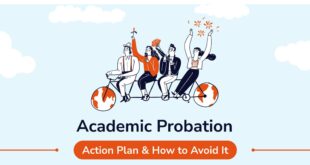Step 1 – Select The Theme
Choose an interesting topic that you will be happy to explore. Normally topics are published on the websites of individual faculties, but you can also choose one that is not previously published and published. The most desirable topics are those that solve problems within a company, and you are trying to solve them through your diploma thesis. Get more information about writing essays and thesis here http://edupeet.com/.
Step 2 – Selection Mentor
When you have an approximate concept, what you would like to write and how to get started, it’s time to find the right professor – mentor. It’s always easier for a professor to come up with an already formed idea. This shows a serious and grad-school-advisor profound relationship with the professor and the way of work.
In the event that the professor does not think your diploma work covers his professional field, he will be able to direct you to another. It is important to be aware that you are working with your mentor through the whole thesis. He will help you when you have problems, guide you, correct things, so it’s really important that you choose a mentor that you know can really help you with your task.
If you choose a topic that has been invited, it is best that you get to the mentor as soon as possible. You can do this via email or call on his talk hours.
Step 3 – Disposition
Disposition means a more detailed presentation of the written work. Writing disposition also begins to search and read literature. It is important that you text correctly and do not copy. Prepare an outline of the graduate work plan and select research methods. When submitting a dispatch, beware of the deadline for submission! Students’ dispositions that will not be submitted in time will only be available in the next academic year.
Step 4 – Writing Of Diploma Tasks
The diploma is a self-written professional work, in which, under the guidance of a mentor, you complete an approved topic. With it, you prove that you master the scientific methodology so that you know how to use domestic and foreign professional literature and the knowledge you have gained during the course of your studies.
The diploma work consists of:
- Table of Contents: The Contents Index is a list of titles of chapters and subsections that reflects the structure and content division of a task. The table of contents is therefore a plan of work, as it shows its composition or the sequence of the topic in question. Let’s assemble it in the end when we finish the task.
- Abstract: We write it in Slovenian and foreign language. It covers up to one page and contains keywords or descriptors. These are passwords that best describe the content of the task and its topic. We will write the summary when the text is already complete. We briefly summarize the problem, results and conclusions of the research. The summary is a summary of the thesis and it is intended for a general presentation of the task. In the summary of the diploma we do not represent the explicit purpose, goals and methods of work. We do this only in the introduction.
The introductory part presents the object of the discussion, the meaning, the goals, the problems and the previous research in this field. In brief, the methods used to deal with the topic and the structure of the thesis are presented. The introduction should not be too long.
The main part of the thesis consists of a theoretical part , followed by an analytical part . Indicate the purpose of your research and what specific goals you want to achieve. The goals can of course be more, and the main goal must be related to the research problem.
The theoretical part consists of a critical review of resources. Various views on the chosen field (different theories) and the starting points on which the analytical part of the task will be based will be presented.
In the analytical work, present the most important own and foreign knowledge, points of view, data and information. In this part of the problem, first describe the problem, then analyze it. Set up and check your hypotheses. On the basis of refuted or confirmed hypotheses, then finalize the final interpretation of the results at the end.
The conclusion is the synthesis of the theoretical and practical part of the task. It contains newly acquired own knowledge and concluding thoughts. You can draw attention to unresolved questions and point out directions for further problem solving.
In conclusion, determine whether the goals are achieved, confirm or reject hypotheses, and summarize the key findings. In conclusion, do not repeat the contents from the theoretical part of the assignment, and do not quote new information.
At the end of the assignment, be a common list of resources used , but only those that you have used and quoted in the order.
Step 5 – Diplomatic Testing
The public appearance, still for many of the worst life experiences, almost nobody, and not even a student, can not escape. Why are these people so scared? Undoubtedly, public speaking is an area that needs to be dealt with accurately and get rid of all the unnecessary ballast, and it is always good to know the trick that makes it easier for us to succeed.

 Infographic Portal New Infographics Resource Portal
Infographic Portal New Infographics Resource Portal
